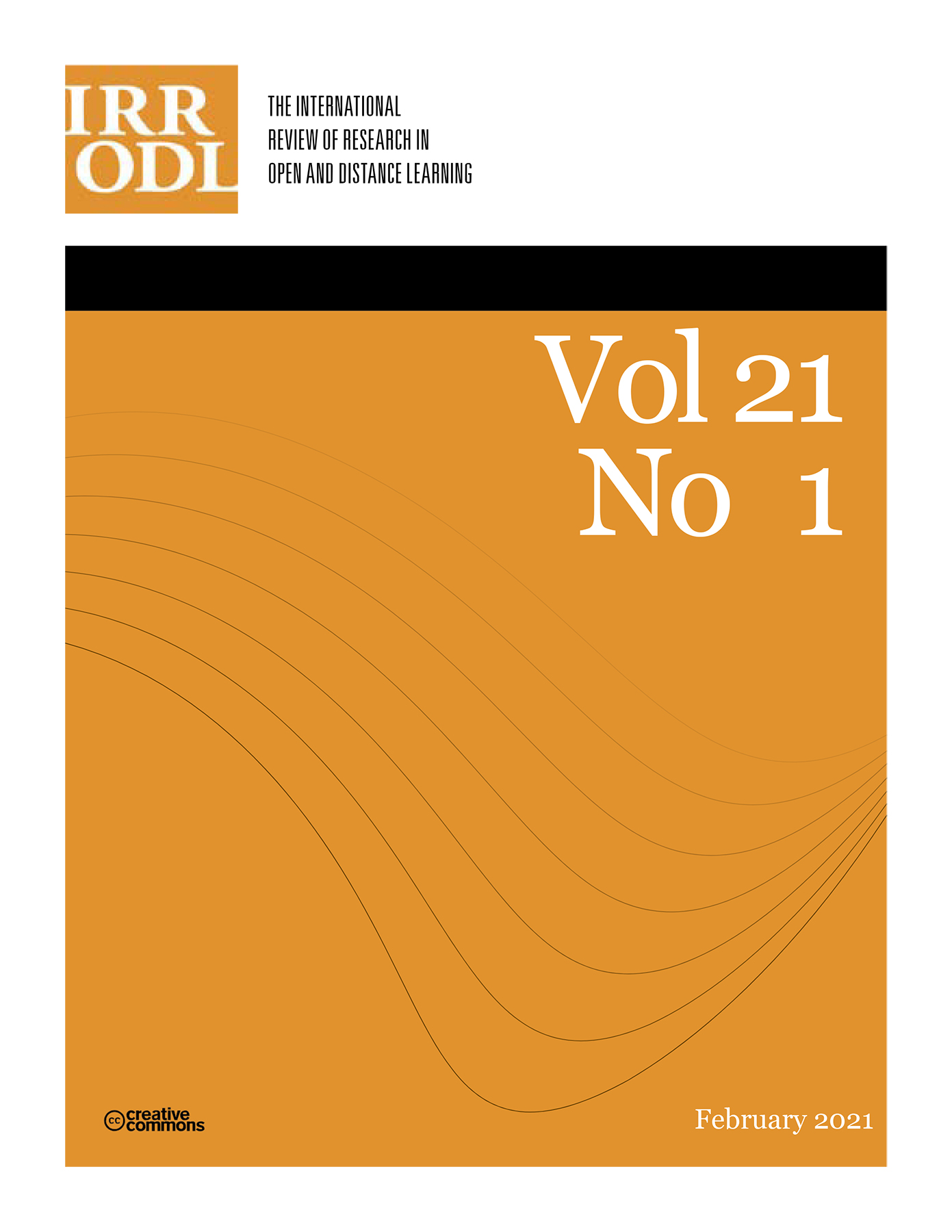Abstracts
Abstract
This paper explores learners’ awareness of and satisfaction with the e-services that an open university provides its learners through its Website. The paper further highlights the influence of age, gender, and education levels on learners’ awareness and satisfaction levels. A case-study approach was adopted and an online survey was used to collect data from learners in various programs of study at Uttarakhand Open University, India. The questionnaire measured the awareness levels of learners regarding 15 frequently used e-services and their satisfaction levels with the 12 most frequently used e-services that the university offers. Results show that gender, age, and education level have a significant influence on the awareness and satisfaction level of the participants. When maturity level and education level of the participants increased, they are more aware of the e-services provided by the University. In some cases, up to 58% of users were unaware of the university’s e-services, and a large number of respondents were either dissatisfied with or undecided regarding the university’s e-services. Results indicate that infrastructure is required for learners’ optimal use of information and communication technology and the e-services that the university offers, including the provision of Internet connectivity at all of the university’s learning support centers.
Keywords:
- e-services,
- Website,
- open and distance education,
- ODE,
- learner satisfaction,
- open university
Appendices
Bibliography
- Chiew, T. K., & Salim, S. S. (2003). WEBUSE: Website usability evaluation tool. Malaysian Journal of Computer Science, 16(1), 47-57. https://ejournal.um.edu.my/index.php/MJCS/article/view/6118/
- Distance Education Council. (2009). Recognition of open and distance learning institutions. Distance Education Council. https://www.ugc.ac.in/deb/pdf/RecognitionODLInstitutionsHandbook2009.pdf
- Fidalgo, P., Thormann, J., Kulyk, O., & Lencastre, J. A. (2020). Students’ perceptions on distance education: A multinational study. International Journal of Educational Technology in Higher Education, 17, 18. https://doi.org/10.1186/s41239-020-00194-2
- Garett, R., Chiu, J., Zhang, L., & Young, S. D. (2016). A literature review: Website design and user engagement. Online Journal of Communication and Media Technology, 6(3), 1-14. https://doi.org/10.29333/ojcmt/2556
- Hasan, L. (2014). Evaluating the usability of educational websites based on students’ preferences of design characteristics. International Arab Journal of e-Technology, 3(4), 258-269. http://www.iajet.org/documents/vol.3/no.%204/8-58521.pdf
- Islam, A., & Tsuji, K. (2011). Evaluation of usage of university Websites in Bangladesh. DESIDOC Journal of Library & Information Technology, 31(6), 469-479. https://pdfs.semanticscholar.org/3df6/15bae95c22964fda5a6c8a11ee7a2b7b04cf.pdf
- Jabar, M. A., Usman, U. A., & Awal, A. (2013). Assessing the usability of university Websites from users’ perspective. Australian Journal of Basic and Applied Sciences, 7(10), 98—111. http://ajbasweb.com/old/ajbas/2013/August/98-111.pdf
- Manzoor, M., Hussain, W., Ahmed A., & Iqbal M. J. (2012). The importance of higher education Websites and its usability. International Journal of Basic and Applied Sciences, 1(2), 150-163. https://doi.org/10.14419/ijbas.v1i2.73
- Mentes, S. A., & Turan, A. H. (2012). Assessing the usability of university Websites: An empirical study on Namik Kemal University. The Turkish Online Journal of Educational Technology, 11(3), 61-69. https://files.eric.ed.gov/fulltext/EJ989199.pdf
- Mustafa, S. H., & Al-Zoua’bi, L. F. (2008). Usability of the academic Websites of Jordan’s universities: An evaluation study [Paper presentation]. The 9th International Arab Conference for Information Technology, Tunisia.
- Permatasari, H. P., Harlena S., Erlangga D., & Chandra R. (2013). Effect of social media on Website popularity: Differences between public and private universities in Indonesia. World of Computer Science and Information Technology Journal, 3(2), 32-37. http://www.wcsit.org/media/pub/2013/vol.3.no.2/Effect%20of%20Social%20Media%20on%20Website%20Popularity.pdf
- Raduica, F., Enache, C., & Simion, I. (2019). Effective ways of managing Websites for academic institutions. PEOPLE: International Journal of Social Sciences, 5(3), 206-214, https://doi.org/10.20319/pijss.2019.53.206214
- Roy, S., Pattnaik, P. K., & Mall, R. (2014). A quantitative approach to evaluate usability of academic Websites based on human perception. Egyptian Informatics Journal, 15, 159-167. http://dx.doi.org/10.1016/j.eij.2014.08.002
- Sahusilawane, W., & Hiariey, L. S. (2016). The role of service quality toward open university Website on the level of student satisfaction. Journal of Education and Learning, 10(2), 85-92. http://dx.doi.org/10.11591/edulearn.v10i2.3238
- Undu, A., & Akuma, S. (2018). Investigating the usability of a university Website from the users’ perspective: An empirical study of Benue State University Website. International Journal of Computer and Information Engineering, 12(10), 922-929. https://doi.org/10.5281/zenodo.1474956
- Uttarakhand Open University (2021). http://www.uou.ac.in/index.php

